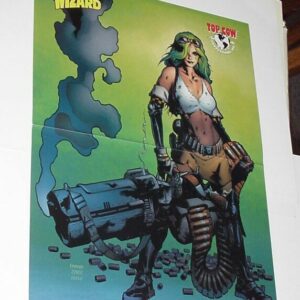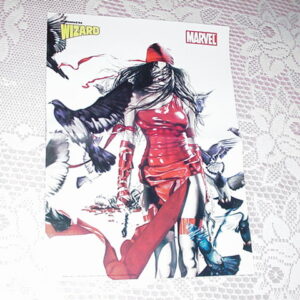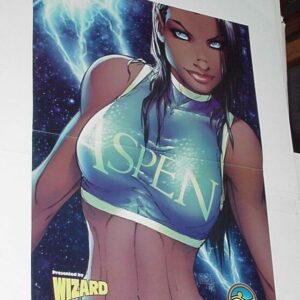Description
Awesome rare Spider-Man poster with info on Spidey’s origin and powers! Spider-Man is a comic book superhero that appears in comic books published by Marvel Comics. Created by writer-editor Stan Lee and writer-artist Steve Ditko, he first appeared in Amazing Fantasy #15 (cover-dated Aug. 1962). Lee and Ditko conceived the character as an orphan being raised by his Aunt May and Uncle Ben, and as a teenager, having to deal with the normal struggles of adolescence in addition to those of a costumed crimefighter. Spider-Man’s creators gave him super strength and agility, the ability to cling to most surfaces, shoot spider-webs using wrist-mounted devices of his own invention (which he called “web-shooters”), and react to danger quickly with his “spider-sense”, enabling him to combat his foes.
A bite from a radioactive spider on a school field trip causes a variety of changes in the body of Peter Parker and gives him superpowers. In the original Lee-Ditko stories, Spider-Man has the ability to cling to walls, superhuman strength, a sixth sense (“spider-sense”) that alerts him to danger, perfect balance and equilibrium, as well as superhuman speed and agility. Some of his comic series have him shooting webs from his wrists. Academically brilliant, Parker has expertise in the fields of applied science, chemistry, physics, biology, engineering, mathematics, and mechanics. The character was originally conceived by Stan Lee and Steve Ditko as intellectually gifted, but not a genius; however, later writers have depicted the character as a genius. With his talents, he sews his own costume to conceal his identity, and constructs many devices that complement his powers, most notably mechanical web-shooters. This mechanism ejects an advanced adhesive, releasing web-fluid in a variety of configurations, including a single rope-like strand to swing from, a net to bind enemies, and a simple glob to foul machinery or blind an opponent. He can also weave the web material into simple forms like a shield, a spherical protection or hemispherical barrier, a club, or a hang-glider wing. Other equipment include spider-tracers (spider-shaped adhesive homing beacons keyed to his own spider-sense), a light beacon which can either be used as a flashlight or project a “Spider-Signal” design, and a specially modified camera that can take pictures automatically.
John V. Romita, Sr. (often known as simply John Romita) (born January 24, 1930) is an American comic-book artist best known for his work on Marvel Comics’ The Amazing Spider-Man. He was inducted into the Will Eisner Comic Book Hall of Fame in 2002. Romita is the father of John Romita, Jr., also a comic-book artist, and husband of Virginia Romita, for many years Marvel’s traffic manager.
Romita designed the look of Mary Jane Watson, a supporting character in the Spider-Man series who would later become the lead character’s romantic interest.34 Romita has stated that in designing Mary Jane, he “used Ann-Margret from the movie Bye Bye Birdie as a guide, using her coloring, the shape of her face, her red hair and her form-fitting short skirts.” Mary Jane Watson made her first full appearance in The Amazing Spider-Man #42 (Nov. 1966), although she first appeared in #25 (June 1965) with her face obscured and had been mentioned since #15 (Aug. 1964). Peter David wrote in 2010 that Romita “made the definitive statement of his arrival by pulling Mary Jane out from behind the oversized potted plant that blocked the readers’ view of her face in issue #25 and placing her on panel in what would instantly become an iconic moment.” Other characters which debuted in the Lee-Romita era include the Rhino in #41 (Oct. 1966), the Shocker in #46 (March 1967), and the Kingpin in #50 (June 1967). Lee and Romita’s stories focused as much on the social and college lives of the characters as they did on Spider-Man’s adventures. The stories became more topical, addressing issues such as the Vietnam War, political elections, and student activism.
Near mint condition.
Related products
-


Aphrodite IX Poster # 2 by Trevor Hairsine Image
$29.99 Add to cart -


Elektra Poster # 2 by Rodolfo Migliari Daredevil Thunderbolts
$29.99 Add to cart -


Supreme Power Poster # 1 Joe Quesada Hyperion Doctor Spectrum Squadron
$29.99 Add to cart -


Fathom Poster # 9 Aspen Shirt Michael Turner Matthews Superman
$39.99 Add to cart



